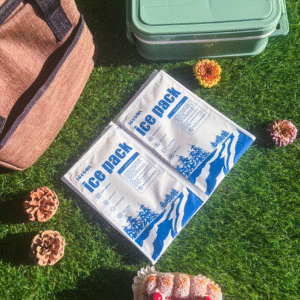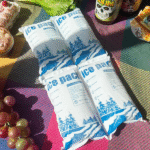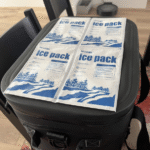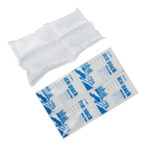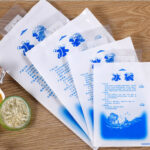Discount Dry Ice Packs: 2025 Buyer’s Playbook
If you’re chasing discount dry ice packs, you need lower cost et zero risk. This guide shows how to size correctly, choose formats that last longer per dollar, and meet 2025 acceptance rules without rework. You’ll leave with ready-to-use checklists, a quick estimator, and a negotiation script you can run today.
-
Where do discounts come from today? Timing, channel mix, et wholesale dry ice tactics
-
How much do you actually need? Fast math to right-size bulk dry ice packs by lane hours
-
Which formats are smartest? Boulettes, nuggets, slices, and pre-bagged units compared
-
How do you stay compliant? Plain-English steps for UN1845 dry ice label et ventilation
-
How do you negotiate better? A script and vendor scorecard that win sustainable pricing
Source note: This playbook merges and upgrades Tempk’s 2025 internal guides on discount dry ice packs, qualité, conformité, and sourcing.
Where do discount dry ice packs actually save money without risk?
Réponse courte: Discount dry ice packs save money when you buy closer to pack-out, size to your lane hours, and choose formats that reduce handling loss. They ne le faites pas save when weak films crack at −78.5 °C, labels are wrong, or vents are blocked—because refusals erase all “discounts.”
Ce que cela signifie pour vous: Price per on-spec hour beats price per pound. A nugget + slice layout can hold longer than small pellets alone, cutting units and labor. Buy from a primary industrial gas depot with program rates and keep a secondary local source for peaks.
Which “cheap” formats reduce total cost on your lane?
Details you can use: Cheap dry ice packs are the ones that meet spec with fewer touches. Pre-bagged 1–2 lb units reduce open-air loss and speed picks. Slices create a steady “cold lid”; nuggets fill side voids; 3 mm pellets help wrap odd gaps but can sublime faster on long lanes. Test hybrid layouts before locking pricing.
| Format Strategy | Mieux pour | Watch Outs | Ce que cela signifie pour vous |
|---|---|---|---|
| Boulettes (3 mm) | Fast pull-down, vides serrés | Higher loss on long lanes | Use sparingly for micro-gaps |
| Nuggets (~16 mm) | Détenir plus, stable sides | Less flexible in tiny spaces | Default side-fill workhorse |
| Slices/Blocks | Cold lid & wall stability | Needs gap-fill support | Fewer units over 48–72 h |
| Pre-bagged 1–2 lb | Travail + dosing accuracy | Small packaging premium | Faster picks, cleaner audits |
Conseils pratiques & victoires rapides
-
Shift some mass to nugget + slice for 48–72 h lanes; add a corrugate spacer to protect surfaces
-
Pre-bagged units vs. bulk scooping: expect less open-bin loss and smoother counts
-
Buy closer to use: schedule will-call to your pack-out window to cut silent sublimation
-
Two-supplier matrix: qualify a backup and keep specs identical across vendors
Vraie cas: A regional dessert brand swapped part of its pellets for a slice lid, cut unit count 12% on 60-hour lanes, and held acceptance photos to one shot per carton—no counter delays.
How should you size discount dry ice packs for each lane?
Réponse directe: Start with a conservative first-pass estimate, then trim mass with logger data. Discount dry ice packs only save when they hit your lane hours with margin.
More context: For frozen targets (≤ −18 °C), ambient and duration drive mass. After your first run, cut 10–20% using evidence, pas de supposition. If your spec is 2–8 °C, switch to gel/PCM; dry ice is too cold and wastes budget.
Quick estimator you can run today
Conseil: A thin corrugate spacer prevents surface freeze damage and may let you reduce total mass after validation.
| Sizing Input | Gamme typique | What to log | Pourquoi ça compte pour toi |
|---|---|---|---|
| Lane duration | 24–72 h | In-box temp every 5–10 min | Tells you how much buffer you need |
| Ambient swing | 15–38 °C | Max/min by handoff | Drives mass more than payload weight |
| Shipper R-value | R-10–R-20 | Insulation spec | Higher R = fewer units |
| Format mix | Pellets/Nuggets/Slice | Layout photo + count | Repeats success at scale |
Hands-on tips
-
Pre-chill shippers to reduce sublimation 10–15% before pack-out
-
Use data loggers dans 1 of every 10 boxes during optimization
-
Standardize photo SOPs so acceptance and audits are copy-paste simple
Where can you buy discount dry ice packs near you?
Réponse directe: Use a two-layer plan: a nearby industrial gas depot on program rates for core volume, plus a regional ice/gas company or retail banner as your same-day backup. Ask for weekend coverage and off-peak pickup windows aligned to your dock.
Channel tips:
-
Industrial will-call: predictable formats (boulettes, nuggets, slices) and best consistency
-
Regional independents: local advantage on lead times and weekend hours
-
Retail banners: useful bridge for small, same-day gaps—don’t build your plan on them
Negotiation script for discounted program rates
Pourquoi ça marche: You lower their uncertainty and show compliance literacy—hallmarks of low-risk customers who deserve better pricing.
How do you stay compliant while using discount dry ice packs?
Réponse directe: Marque UN1845, montrer net dry ice in kilograms, et assurer emballage ventilé. Passenger baggage has tight limits; cargo follows Voici pi 954 et variations de l'opérateur. Discount dry ice packs don’t help if your carton gets refused.
What to do now: Print net-kg panels, train staff on venting, and add label photos to your SOP. Keep a CO₂ monitor in staging rooms; 1 kg of dry ice expands into hundreds of liters of gas in enclosed spaces—ventilation matters.
Fast compliance checklist
-
Proper shipping name “Dry Ice/Carbon dioxide, solide" + UN1845 visible
-
Poids net (kg) marked per package and overpack where applicable
-
Ventilé extérieur; never air-tight closure
-
Photo SOP for labels before hand-off; retain with shipment ID
2025 trends in discount dry ice packs and CO₂ supply
Aperçu de la tendance: Expect continued use of updated Iata 2025 listes de contrôle d'acceptation and carrier job aids, alors que biogenic CO₂ and CCS projects add regional capacity. For buyers of discount dry ice packs, this means better odds of multi-supplier programs and steadier pricing, especially heading into peak seasons.
Derniers développements en un coup d'œil
-
Public acceptance checklists updated for 2025 improve counter consistency for UN1845 and net-kg marks
-
New biogenic CO₂ plants are slated to come online, easing supply gaps in North America
-
CCS projects in Europe signal a longer-term boost to captured CO₂ availability for industry
Perspicacité du marché: Analysts and trade coverage point to mid-single-digit to high-single-digit CAGR for dry ice and related equipment through 2032. Operationally, that means competition among suppliers—and more room to negotiate program rates if you commit volume and forecasts.
Questions fréquemment posées
Q1: Can I fly with discount dry ice packs?
Yes—passenger baggage allows small quantities with airline approval, emballage ventilé, and clear marks; cargo follows PI 954 and operator rules. Keep it simple: mark UN1845 and net-kg, and never seal air-tight.
Q2: How long will discount packs last in transit?
Typical starting point is 24–48 h depending on ambient and insulation; size to lane hours and then trim with logger data.
Q3: Are “cheap dry ice packs” safe for food and pharma?
Yes—if the CO₂ is food/pharma grade, packaging is durable at −78.5 °C, and the shipper is validated for your lane. Ask for film/seal data and run a small validation.
Q4: When should I use gel/PCM instead of dry ice?
If your target is 2–8 ° C, gel/PCM is the right tool. Sauvegarder discount dry ice packs for ≤ −18 °C frozen lanes.
Résumé & étapes suivantes
Ce qui compte le plus: Pair discount dry ice packs with right-sized mass, hybrid formats that reduce units, and clean labeling to avoid refusals. Use on-spec hour pricing, not $/lb, and maintain a two-supplier matrix with off-peak will-call. Valider, then trim 10–20% safely.
Your move:
-
Run the estimator on your top lanes
-
Pilot a nugget + slice layout with spacers
-
Send the negotiation script to two suppliers
-
Add photo SOPs and net-kg panels to every carton
CTA: Request a 10-minute lane review from Tempk to get a unit-by-unit plan.
À propos du tempk
We engineer practical cold-chain systems across dry ice, PCM, and hybrid solutions. Our teams combine packaging science, opérations, and regulatory know-how to cut cost without risk and help you scale with confidence. We back claims with data and simple tools you can run in-house.






